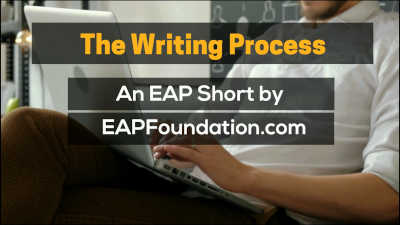Show AWL words on this page.
Show sorted lists of these words.


 







|
After checking your work, the next stage of the writing process is to redraft. This page explains what redrafting is, gives reasons why you should redraft, and gives some ideas about how to do this. There is also a checklist at the end of the page that you can use to check your own first draft.
What is redrafting?
As mentioned earlier, a draft is a version of your writing in paragraph form. Producing a final paper is a continual process of writing, editing, getting feedback and refining your work to make better a version or 'draft'. This process of producing a new draft is called redrafting. You should be prepared to redraft your work at least once - more likely several times - in response to feedback or as you discover areas that need more work.
Why redraft?
An essay or report is a detailed and complicated piece of work, which will take a lot of time to organise into a coherent whole. It is unlikely that you will produce the best version at the first attempt, and one reason for redrafting is that it will allow you to make improvements to your work and thereby increase the quality of the final submission. A second reason to write more than one draft of your work is that this process will allow you to break down the task and make it more manageable, which should make it a less stressful experience. A third benefit of redrafting is that by seeking and responding to feedback (from peers or the teacher), you will improve your writing skills, which will benefit you not only with the current assignment but also future ones.
How to redraft?
How you redraft will depend in part on whether or not your work has been checked by a teacher or peer. If it has been checked and you have received feedback, your first task will be to make sure you understand the feedback. If you do not, you will need to ask the person who gave it to you for clarification. If you do not understand the feedback, you will not be able to make improvements.
Whether your work has been checked by someone else or by yourself, your next task should be to identify the major problems which you need to work on. Although you might want to work on everything, this may not always be possible, and focusing on the main problems will help you make the greatest improvement to your work. Remember that at this stage of the writing process, you should be working on the 'bigger' aspects of the task, namely content and organisation. This means areas such as supporting ideas and references to sources (for content) and thesis statement, topic sentences and transition signals (for organisation). You should avoid focusing on the 'smaller' aspects of the task such as grammar, spelling and punctuation, as these are only dealt with at the end, when proofreading.
Checklist
Below is a checklist for redrafting.
| Item | OK? | Comments |
| I understand what the feedback on my writing means (if you have received feedback). | ||
| I have identified the major problems which I need to work on, which are related to the 'bigger' aspects such as content and organisation (not 'smaller' ones such as grammar or spelling). |
References
Centre for Applied English Studies, The University of Hong Kong (n.d.) Unit 4 - Drafting. Available at: http://www4.caes.hku.hk/writing_turbocharger/drafting/default_answers.htm (Access date 2/4/18).
Oshima, A. and Hogue, A. (1999) Writing Academic English. New York: Addison Wesley Longman.
Next section
Read about the final stage of the writing process, proofreading, in the next section.
Previous section
Read the previous article about checking your work.







